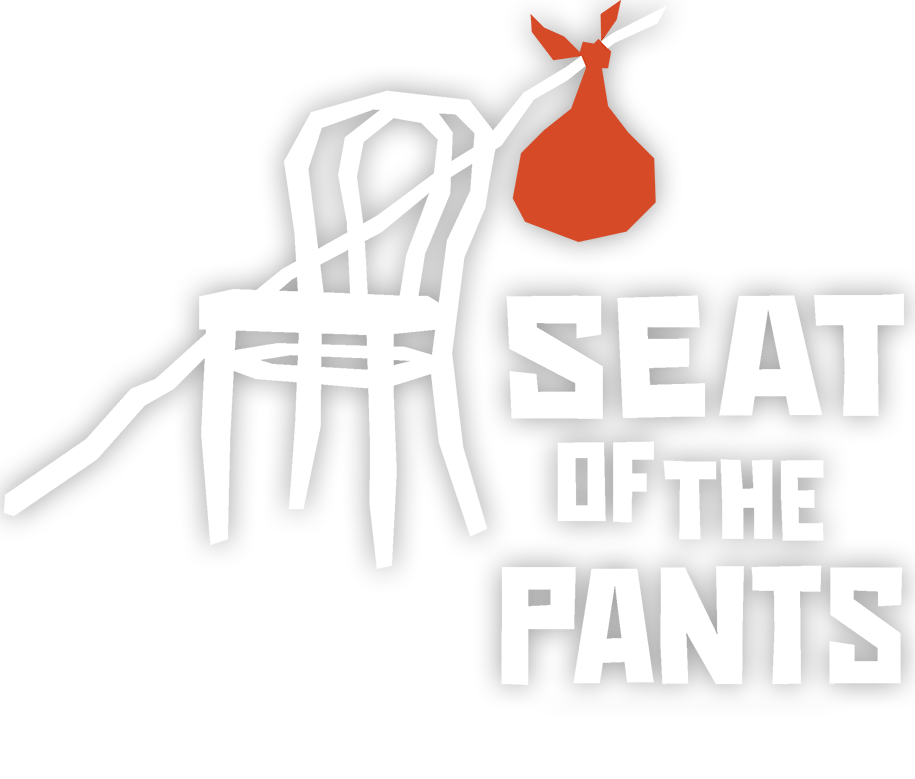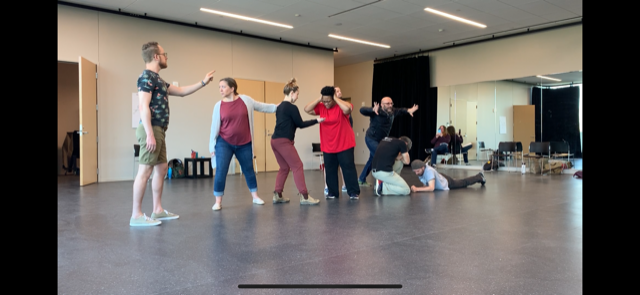AN OVERTURE OF TABLEAUX: NATALIE KERN
If I could go back and speak to my younger actor self, one of the things I would try to impart is the high level of trust that directors are placing in you when you are cast in a project. As a young actor, with selfish blinders on, I remember feeling intense imposter syndrome and such insecurity in my own value to the process. Through the years I’d like to think I’ve become more aware of the unique and delicate relationship that is built on trust between an ensemble, directors and designers. We have all been asked to paint with our brightest and deepest color, and we trust that the person(s) watching are discerning enough to see what needs to be adjusted to improve the whole picture.
The exercise we’ve been developing recently is a perfect balance of this type of trust-building. Our director and consulting artists have done a wonderful job in scoring out the climaxes and auxiliary climaxes that make up the story we want to tell. We’ve been building a visual overture of sorts as we explore these three main climactic points of the play. Utilizing tableaux, and exploring with transitions, quality of movement, and various other Michael Chekhov approaches, we are attempting to give the audience a visual preview of the story before the play begins. Much like a musical overture will give you an aural preview of the score before the audience has any context.
When in a tableau, it’s not always possible to see how others may be feeding off of your choices, or understand how you fit into the larger visual picture. The only thing I have found that feels right to me, is to fully embody that truest moment for my character and look for the point of connection to the whole. This is not a literal translation of course, but sometimes a more figurative representation about how Dabby Bryant shows up in that moment. Who is she connected to? Who is she working against? I find it feels more effective to work to fill that moment with my deepest and brightest Dabby paint, as I see her.
Working in this way seems to me to be a perfectly placed bridge exercise as we are about to transition in our rehearsal process. Up until now we have been in exploration, full of experimenting, play and questions, but will soon be heading into a more traditional process in which we will be asked to begin answering our own questions and work on the more permanent sculpting of of our play. For me, this exercise in building an overture tableau has been a culmination of building trust. Trusting in my own value, trusting in the work we’ve done up to this point, trusting in my fellow ensemble, and trusting in our director and design team - all of which will be critical to our final product.
While I’m nervous to move into the next part of the process, and still fight with my own insecurities and imposter syndrome, I am thankful for the sense of trust within our group that has come from playing and exploring these climaxes together.


